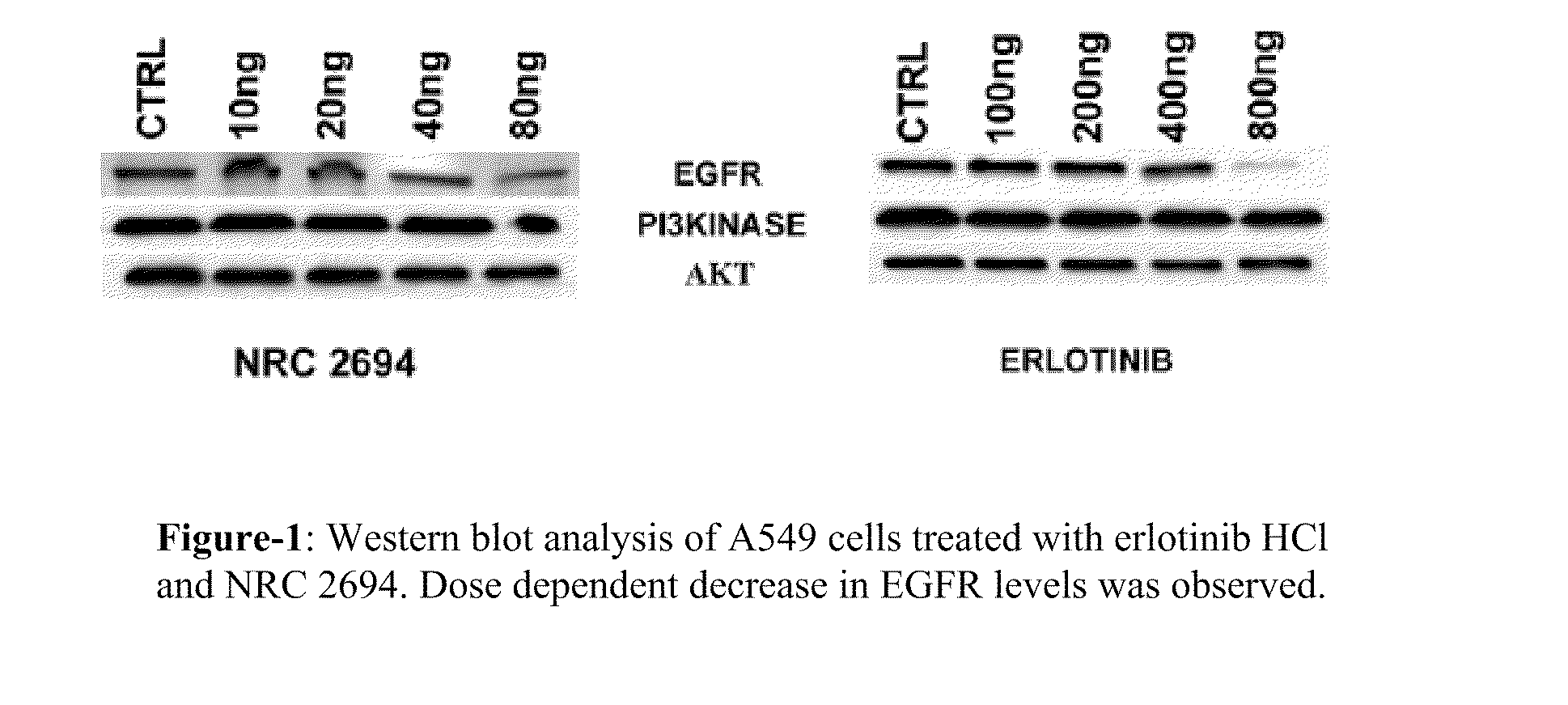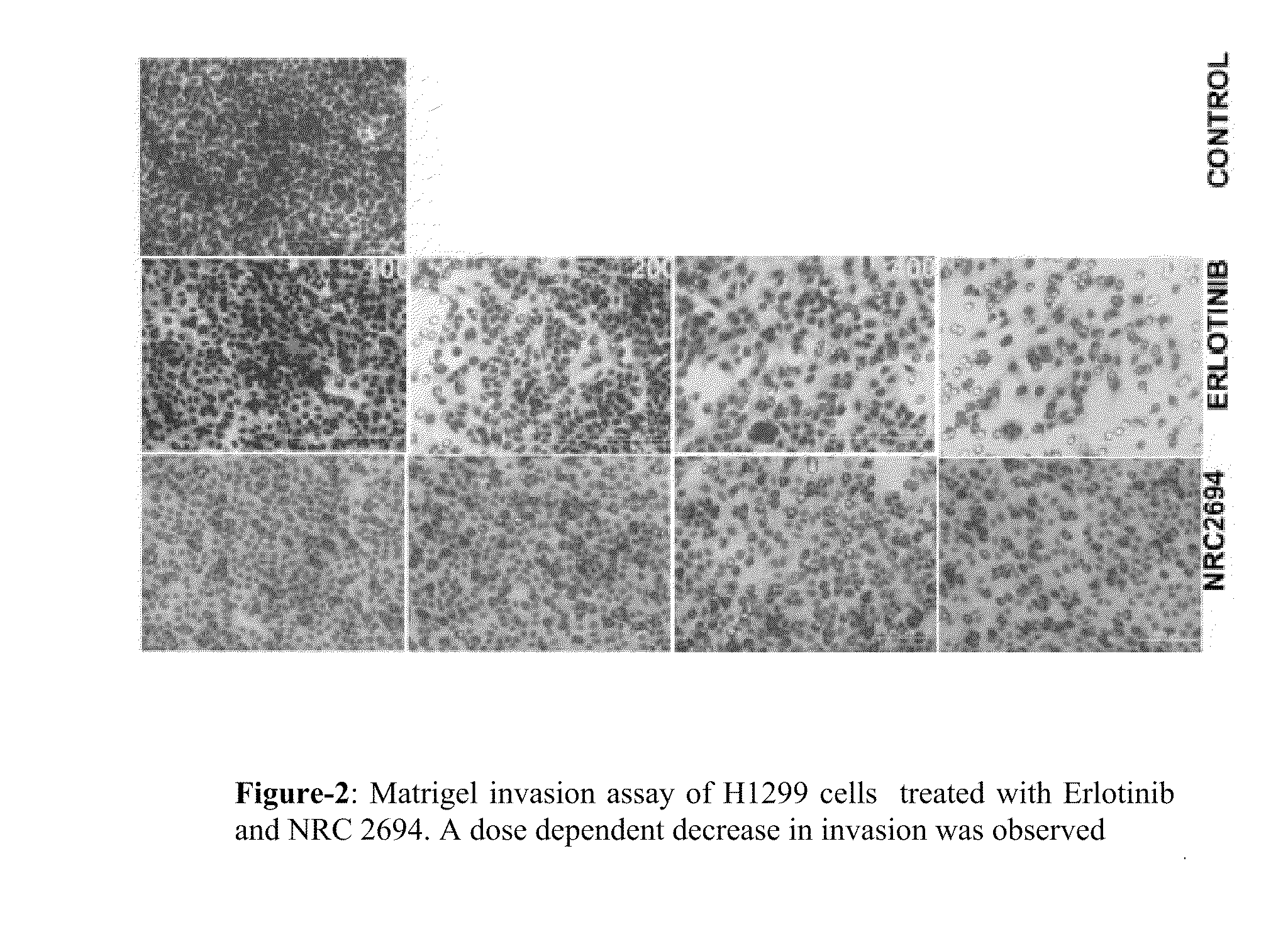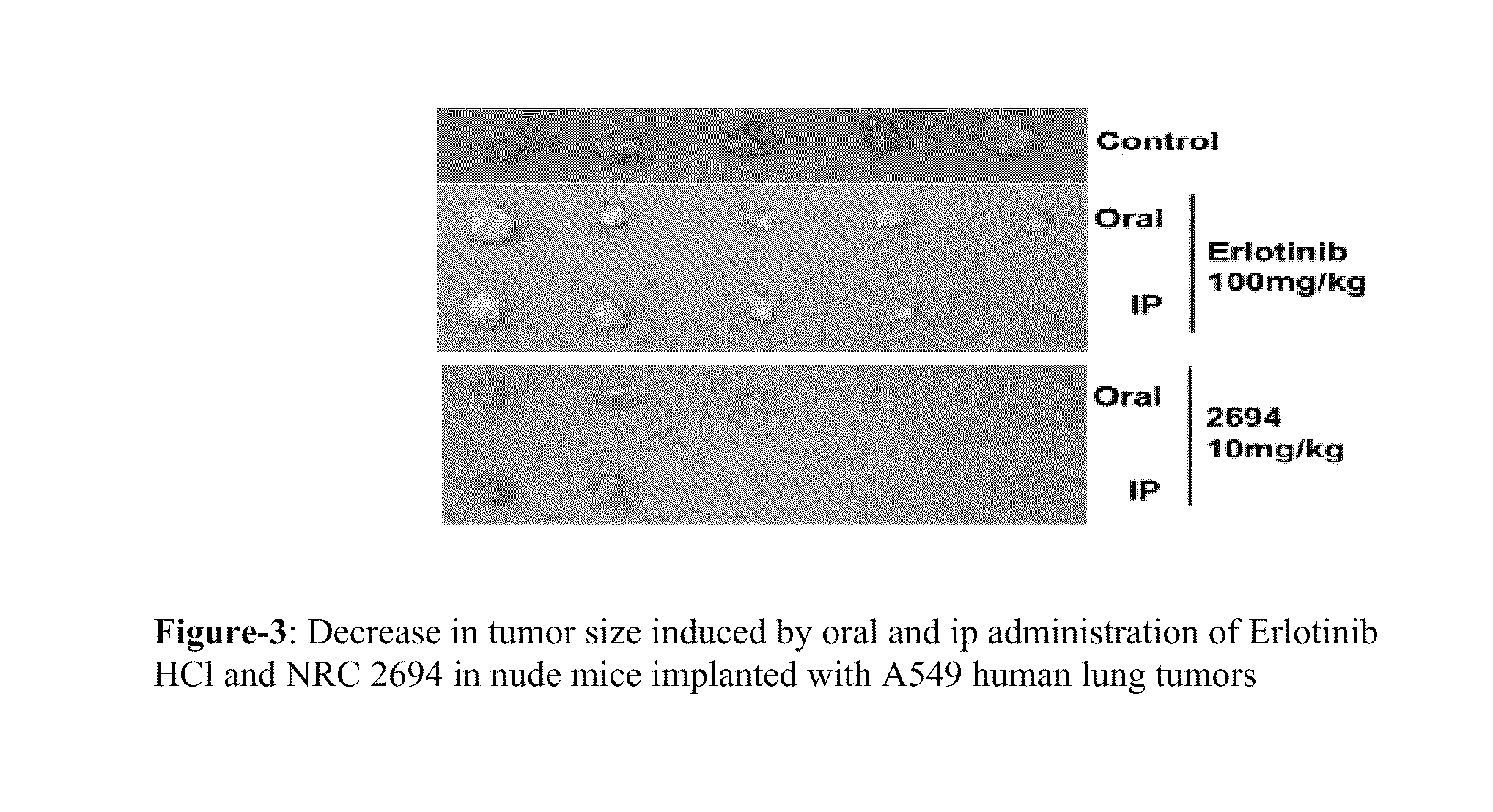6,7-dialkoxy quinazoline derivatives and methods of treating drug resistant and other tumors
a quinazoline and dimethyl quinazoline technology, applied in the field of 6, 7dialkoxy quinazoline derivatives, can solve the problems of toxic compounds to cells, and achieve the effects of improving potency, improving anti-cancer and anti-proliferation effects, and improving curative
- Summary
- Abstract
- Description
- Claims
- Application Information
AI Technical Summary
Benefits of technology
Problems solved by technology
Method used
Image
Examples
example 1
Preparation of N-(3-ethynylphenyl)-7-methoxy-6-[3-(4-morpholinyl)propoxy]-4-quinazolinamine (IA)
i) Preparation of 4-Chloro-6-[3-(4-morpholinyl)propoxy-4-quinazoline (IIIa)
[0094]Into a clean and dried 5-Liter four necked round bottomed flask equipped with a mechanical stirrer, reflux-condenser, pressure equalizing addition funnel, and thermometer socket were charged chloroform (3000 ml), dimethyl formamide (30 ml) followed by 7-methoxy-6-(3-morpholino propoxy)-3,4-dihydro-quinazolin-4-one (IIa) (150 g), obtained according to the process given in Example-1 of PCT international application published as WO.2005 / 070909A1. Oxalyl Chloride (120 g) was slowly added and the reaction mass was heated to reflux temperature and maintained at reflux temperature for about 5 hours. Reaction was found to be completed by HPLC test. The solvent chloroform and excess oxalyl chloride were distilled off by applying mild vacuum. The reaction mass was cooled to about 40° C. and added chloroform (300 ml) an...
example 2
Recrystallisation of N-(3-ethynylphenyl)-7-methoxy-6-[3-(4-morpholinyl)propoxy]-4-quinazolinamine from acetonitrile
[0103]Into a two liter three necked round bottomed flask equipped with a mechanical stirrer, reflux-condenser and thermometer socket were charged acetonitrile (1000 ml), followed by N-(3-ethynylphenyl)-7-methoxy-6-[3-(4-morpholinyl)propoxy]-4-quinazolinamine (25 g) obtained from the process described in the above given Example-(1). The reaction mass was slowly heated to 65-70° C., so that the solid material completely dissolved and carbon treatment was given and filtered the reaction mass. The filtrate was transferred into another round-bottomed flask and slowly cooled to 10-15° C. and maintained for 30 minutes at that temperature. The mass was filtered and after washing the cake with chilled acetonitrile dried to get 20.50 g of N-(3-ethynylphenyl)-7-methoxy-6-[3-(4-morpholinyl)propoxy]-4-quinazolinamine as a white crystalline solid.
[0104]mp: 186-187° C.;
[0105]Purity: 9...
example 3
Recrystallisation of N-(3-ethynylphenyl)-7-methoxy-6-[3-(4-morpholinyl)propoxy]-4-quinazolinamine from Ethyl acetate
[0106]Into a three liter three necked round bottomed flask equipped with a mechanical stirrer, reflux-condenser and thermometer socket were charged ethyl acetate (2000 ml), followed by N-(3-ethynylphenyl)-7-methoxy-6-[3-(4-morpholinyl)propoxy]-4-quinazolinamine (25 g) obtained from the process described in the above given Example-(1). The reaction mass was slowly heated to 65-70° C., so that the solid material completely dissolved and carbon treatment was given and filtered the reaction mass. The filtrate was transferred into another round-bottomed flask and slowly cooled to 10-15° C. and maintained for 30 minutes at that temperature. The crystalline mass was filtered and after washing the cake with chilled ethyl acetate dried to get 20.95 g of N-(3-ethylphenyl)-6-(3-morpholino propoxy)-7-methoxy-4-quinazolinamine as a white crystalline solid.
[0107]mp: 185-187° C.
[0108...
PUM
| Property | Measurement | Unit |
|---|---|---|
| temperature | aaaaa | aaaaa |
| temperature | aaaaa | aaaaa |
| mass | aaaaa | aaaaa |
Abstract
Description
Claims
Application Information
 Login to View More
Login to View More - R&D
- Intellectual Property
- Life Sciences
- Materials
- Tech Scout
- Unparalleled Data Quality
- Higher Quality Content
- 60% Fewer Hallucinations
Browse by: Latest US Patents, China's latest patents, Technical Efficacy Thesaurus, Application Domain, Technology Topic, Popular Technical Reports.
© 2025 PatSnap. All rights reserved.Legal|Privacy policy|Modern Slavery Act Transparency Statement|Sitemap|About US| Contact US: help@patsnap.com



